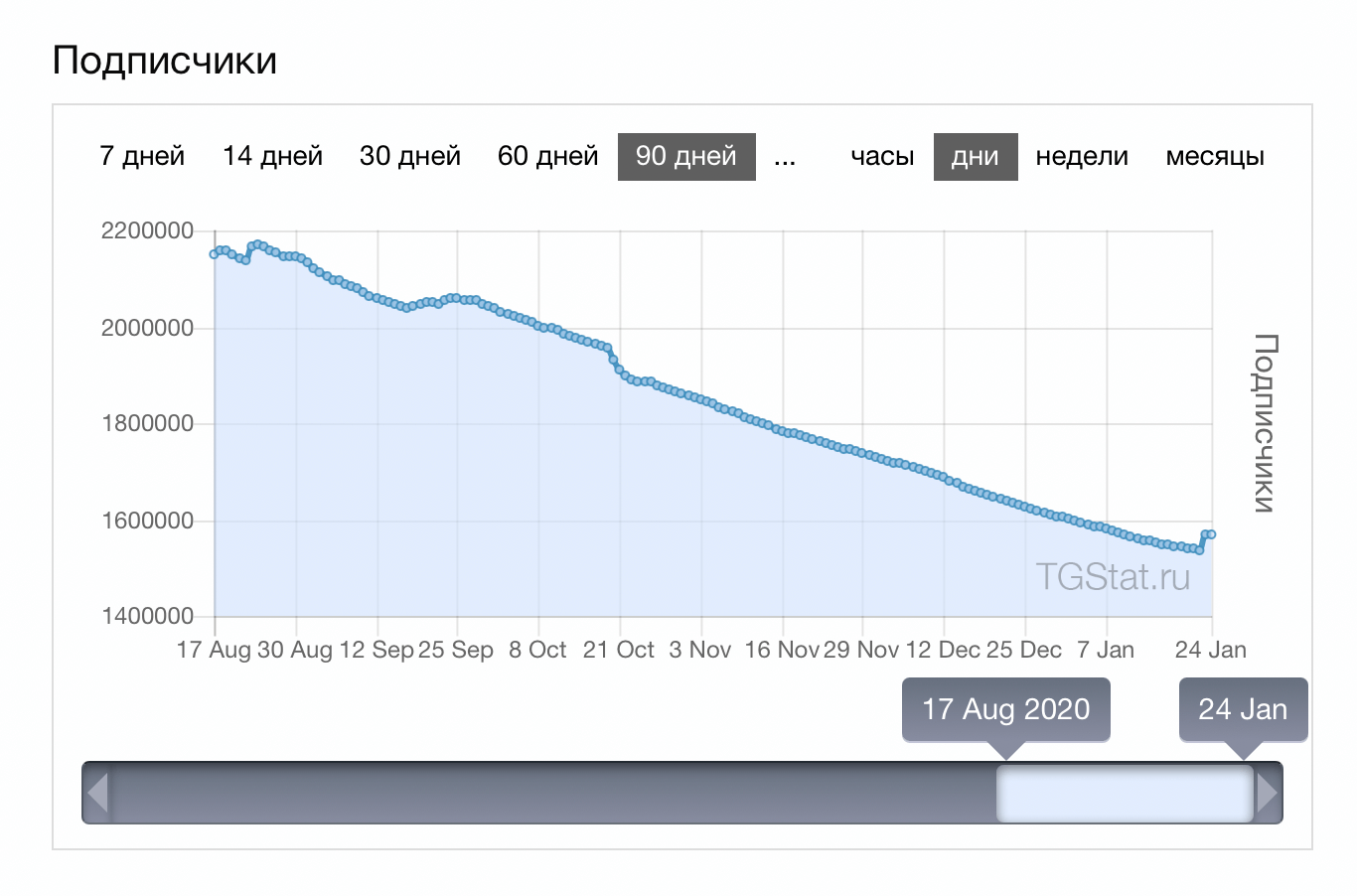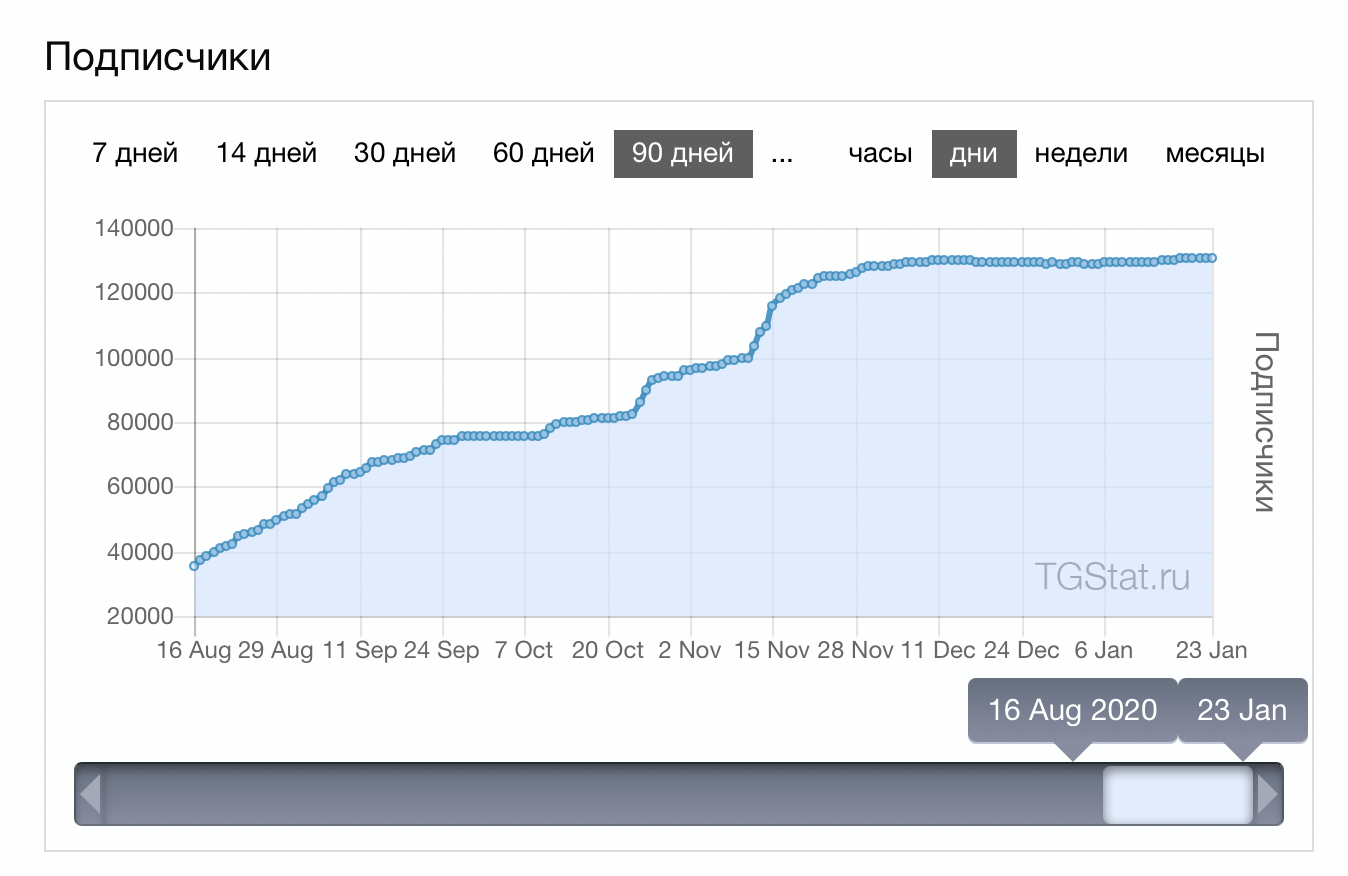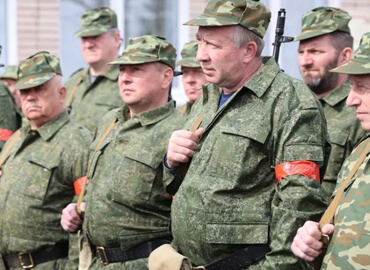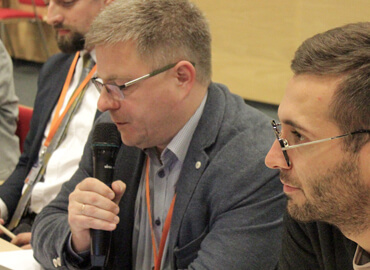The Telegram (TG) app, initially positioning itself as a fast and secure means of communication, has long grown from a communication tool into a full-fledged social network. Into an environment from which political actions advance are not able to manifest themselves elsewhere. Into an app where technologies change the established way of life and allow people to overcome mistrust in an atomized society.
Telegram is the second most popular messenger in Belarus. It is used by 43% of audiences according to infopolicy.biz. Moreover, this application showed an almost two-fold increase in the share of users over this past year. Most of the population uses Viber (73% according to info policy data).
The main difference between Telegram and other apps is that there are of channels that allow you to directly receive practical news from primary sources and discuss them there. Initially, this phenomenon took off in Russia, where the messenger’s capabilities found favor with political strategists serving financial influence groups. The high level of security made it possible to post any content quickly and safely without fear of consequences.
The history of the messenger’s origin was different in Belarus. It was not common in Belarus to sort things out publicly, and there were simply no powerful political and commercial players on the platform. On the other hand, а closed community of political bloggers has formed there, as well as chats for free discussions of problems. There, people have sublimated their need to speak out, unrealizable under conditions of authoritarianism. In this regard, the platform fell into the request of society.
The transition from dissident hideaway to social network was triggered by social processes for which traditional media lacked coverage. The audience was afraid to contact the media directly and it was safer and quicker to send information to a feedback bot. Seeing that TG was turning into a book of complaints, users trusted it more and more. From a platform of discussions and coverage it turned into an instrument of influence.
The first coordinated action of the TG community took place in December 2019, on the eve of the anniversary of signing the treaty of the Union State with Russian Federation. At tha time the administrators of the largest communities published an open appeal stating that the independence of Belarus is not a bargaining chip and that the deepening of integration with Russia harms the country’s national interests. The appeal gained 300,000 views and made it to the tabloids of classic media. Furthermore, TG channels largely shaped the agenda, setting the tone for the entire discussion of the topic on the integration with the Russian Federation.
The next impetus for the development of the TG community was the Covid pandemic. At first, the authorities showed openness, with the Ministry of Health even creating its own TG channel, where it published up-to-date case statistics. The project was supported by independent bloggers, but the synergy between the authorities and an uncontrolled community did not last long. Aleksandr Lukashenko became a Covid dissident, the openness of the ministry ended rapidly, and society was left with a demand for information, spurred on by waves of moral panic.
As a result, TG channels became the main source on the topic on the coronavirus. Far from all of them strove for objective coverage, and many served as topic parasites .
With the government concealing real mortality figures, a general lack of understanding of what Covid is, and mistrust of the state, the audience was ready to consume any content. Telegram satisfied this opportunity as well. Mixed among panicky rumors about «mountains of corpses», it was possible there to receive some information about the state of hospitals, necessary assistance, etc.
It should be noted that commercial structures engaged in earning money from advertising took advantage of the Covid pandemic. At one time, several channels appeared that showed rapid growth on the topic of coronavirus. They filled the feed with junk content, copying news sites and other channels. The infusion of advertising allowed them to gain a large but indiscriminate audience. Subsequently, most of these channels were sold and changed their topic.
With increased momentum, the Covid campaign turned into a political campaign. Unrestrained by the rules of registered media and with the support of loyal audiences, TG channels at first totally set the agenda for the pre-election race.
Announcements of pickets to collect signatures of independent candidates, meetings with voters – all these were supported by independent channels. After her arrest, the majority unanimously supported the last independent candidate, Svetlana Tsikhanovskaya, which also played a role in her electoral success.
Channel segments
Here we will not touch on commercial or entertainment channels. The focus of attention is on blogs, which have largely shaped the political situation in Belarus. As a rule, these are the ones that state channels talk about when they speak about «destructive influence».
The first level includes the flagship Nexta channel (800K) and Nexta live (1500K). The channel of opposition YouTube blogger Stephan Putilo shot out in the spring of 2019 with the publishing of exclusive information about well-publicized disappearance and suicide of a policeman in Mogilev. He specialized in publishing information from sources at the Ministry of Internal Affairs and other material critical of the authorities.
During the elections, it was this channel that played a major role in forming protest moods. An extensive base of subscribers, constant flow of information from the field, and subscribers’ attention from Russia gave it unprecedented growth, with the channel reaching over 2 million subscribers. There were also announcements of protest actions. As Putilo himself said in an interview, the plans were drawn up in a private chat with the administrators of the largest channels.
But after gaining an audience the project is struggling now to keep it – the number of subscribers shrunk from 2.165 million to 1.539. Audience fatigue and harsh rhetoric, balancing on the edge of hate speech, together with weak fact checking has resulted in a massive turnover of subscribers.

The second level is the Belarus Brain Channel («Belarus Golovnogo Mozga»). Before Nexta appeared, this channel was the largest Belarusian Telegram channel. It played a significant role in covering the early stages of the campaign. Administrator Igor Losik conducted successful media campaigns targeted at different groups in society, for example, «not my president», where security force staff published their uniforms with IDs criticizing Aleksandr Lukashenko. After his success, he was arrested and he is currently on hunger strike to protest the charges brought against him.
Similar content is provided by the channel Moya Kraina Belarus («My Homeland Belarus») and Basta, with more straightforward and simple content aimed at mobilizing the masses.
The satirical channel «Tea with raspberry jam» («Chai z malinavim vareniem»), which pokes fun of news happening in the country and the world, is popular. Demonstrating restraint, a lack of hate speech,
and a good sense of humor among administrators has allowed it to keep its position, while leading channels are experiencing massive subscriber outflow.
The project MotolkoHelp («MotolkoPomogi»), a channel by the blogger Anton Motolko, stands separately. Initially a purely urbanistic blog devoted to the problems of development of Minsk, it gradually became politicized and became one of the more popular media outlets in Telegram. What is important is that the channel was built on a personal brand and that with an audience outflow, tired of the constant clickbait, MotolkoHelp has only grown.

The third level consists of medium-sized channels with 10 to 40 thousand subscribers. Mainly these are analytical author blogs where current events are reflected and forecasts of the development of situation in Belarus are given. These include the channels Shraibman, Reflection and Reaction, Klaskouski, and others. Despite having relatively few subscribers, their audience is more loyal. Such channels are «influencers for influencers» and set the tone for the overall agenda.
Most of these channels are united by the fact that large projects, which have grown during the active phase of the campaign, are now losing their audience. There is no spark, no vital or hidden information which holds an audience. As a result, blogs, which have devoted more attention to fact checking and information quality, survive as do channels of major classical mass media. This category has practically not lost any subscribers. The most notable in this segment are tut.by, Onliner, BelSAT, Nasha Niva, Kyky.org, and Radio Liberty (Radio Svaboda).
There is also a small group of Russian channels working on Belarusian themes. These are Minsk Seven Boyars («Minskaya Semiboyarshchina»), Bulba of Thrones («Bulba prestolov»), and the All-Belarusian People’s Assembly («Vsebelaruskoe narodnoye sobranye» (former BelaRussian dialogue)). The number of subscribers for these ranges between 10 and 20 thousand.
State presence
Despite constant «washing» in its own mass media, state resources took root on Telegram badly. There were several small channels that published incriminating information about opposition activists and politicians, but they were unable to attract more than a couple of thousand subscribers and were marginalized.
Most officials avoided Telegram, as they were more frightened by it than by other social networks. The press services of individual institutions had more or less a presence, including the Investigative Committee, the Ministry of Interior, the Ministry of Education, and the Ministry of Defense. Here was also the flagship channel «Pul pervogo», which is the brainchild of Alexander Lukashenko’s press service. Announcements of his meetings, fragments of his speeches, and informal videos were published there. Given Lukashenko’s inaccessibility to non-state journalists, this channel became the main source of information about the president’s activities for independent media and they were forced to constantly consult it.
Everything changed with the start of the presidential race. A special group of state media employees was created in the Presidential Administration which was engaged in the administration of the network of black propaganda channels. Open hate speech, incitement to hatred, threats, clumsy caricatures, direct insults, publication of criminal case materials – this is a short description of the channel’s content.
The network includes several dozens of channels with equally low quality of content. It is important to note that the ratio of views and the number of subscribers remain low, which indicates cheating and forced subscription by employees of government institutions. In this mode, they will not last long, though for now they keep people nervous.
Digital state
In the context of political crisis and mistrust of government institutions Belarusians faced the necessity of building their own structures to replicate the functions of the state. Naturally, Telegram became the platform for this.
The first initiative was a project to counteract election fraud – Golos. Voters registered on the service, identified their polling station, and then, on election day, sent a photo of the ballot to the system with the help of a special bot. With a large number of registrants on the system, it was possible to identify manipulations at certain polling stations. For example, if the number of ballots for a certain candidate submitted to Golos exceeded the number of votes in the official count, this was guaranteed to determine falsification.
Subsequently, this idea was used to learn more about public opinion on such issues as whether blocking SWIFT was necessary. Currently, a poll on what the new Constitution should be like is being held. The platform «Shod» (Gathering) is being prepared for launch, allowing nomination of candidates for elections. Voter registration as well as voting there also takes place using a chat bot.
The most important and successful became the initiative dze.chat, which bridged the torn fabric of society. In Belarus, there was practically no concept of public spaces near people’s own homes, as courtyards were perceived only as kind of functional place without a social burden. The level of communication among residents living in the same area was low due to their distrust of each other. But everything was changed through the function of the geochats, which created groups by user location.
Owing to this, local chats quickly appeared in courtyards, houses, and apartment buildings, which united politically active neighbors. After centralization, adding all chats to an open map, there was an explosive growth in their numbers. Belarusians discovered that it is possible to have joint tea parties, concerts, handicraft classes, and much more in own courtyard. Of course, many were united through their rejection of the current government. Leaflets, hanging national symbols, and protest songs have become an integral part of the courtyard movement.
As a result, free courtyards became a thorn in the authorities’ side. Separate rebellious neighborhoods, where mainly middle-class individuals and families live, were turned into ghettos and under constant control of the police. They were punished by cutting off their water supply and by sending in groups of vigilantes and special forces. Despite the pressure, the courtyard marches remain the last stronghold of street protest activity.
During the digital revolution in Belarus, projects appeared that, with several qualifications, could be defined as «law enforcement» projects. Among them are what could be called «attacking» projects, such as Black Book of Belarus (89K) and the project Karateli (Punishers) (65K). Through these the personal data of security officials is published so that they may be subjected to public pressure for their actions. Another project is Cyber Partisans. During the protests, several groups of hackers of varying degrees of professionalism appeared and disappeared. They organized the hacking of state resources, published personal data of special forces officers, organized DOS attacks and complaint raids against propaganda accounts.
All the main political forces and initiatives are there – Country for Living («Strana dlya zhizni»), Svetlana Tsikhanovskaya, Pavel Latushko, Honest People and others. Telegram has become the main platform of political life in a country where politics seemed impossible in principle.
This article is published as part of the Prospect Foundation project «Online Media Literacy for Editors and Administrators of Social Media Public Pages», managed by iSANS and supported through grants from the International Visegrad Fund. The article is published on the partner’s site @visegradinsight.

Материал доступен на русском языке: Телеграм в Беларуси: больше, чем мессенджер









